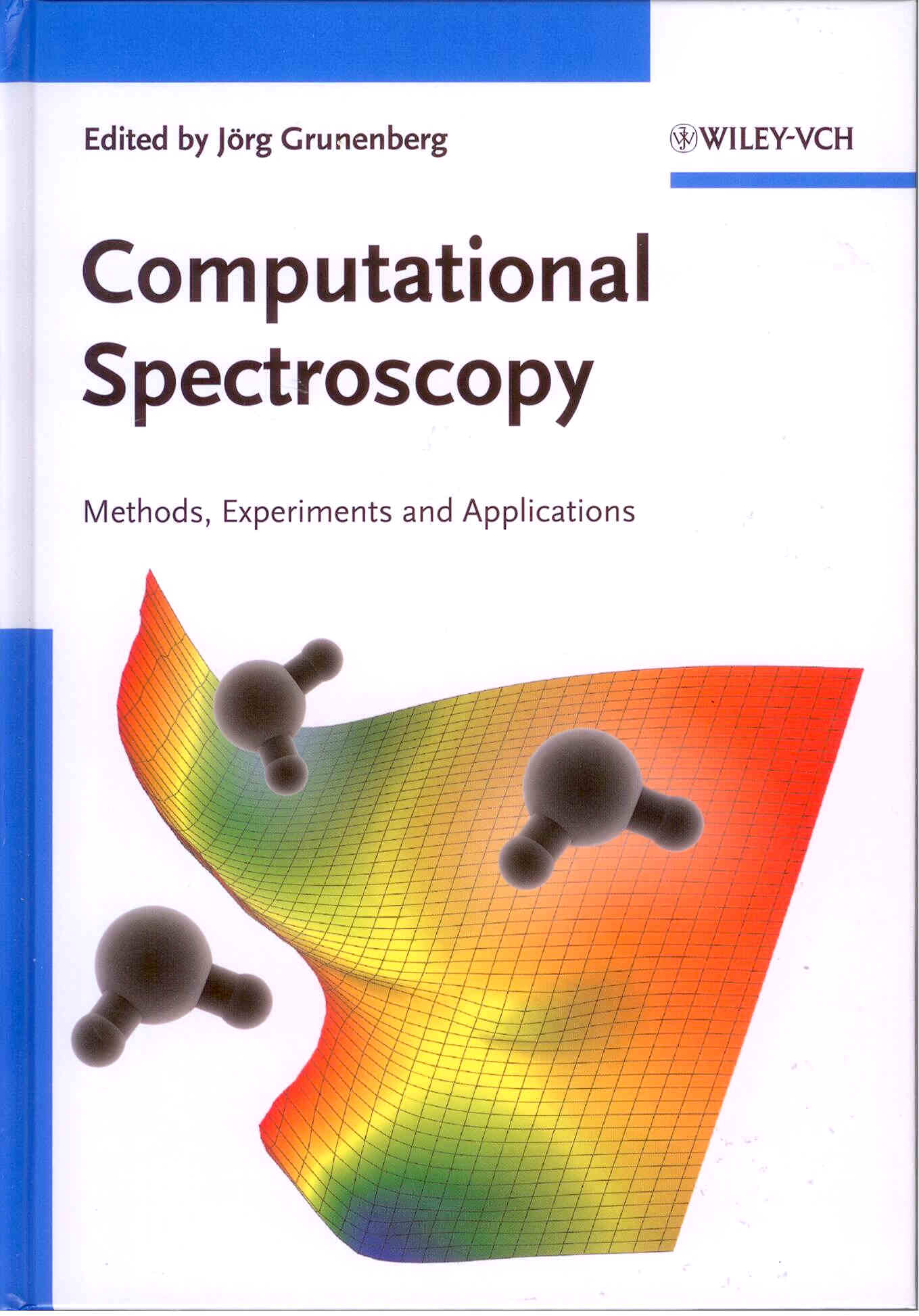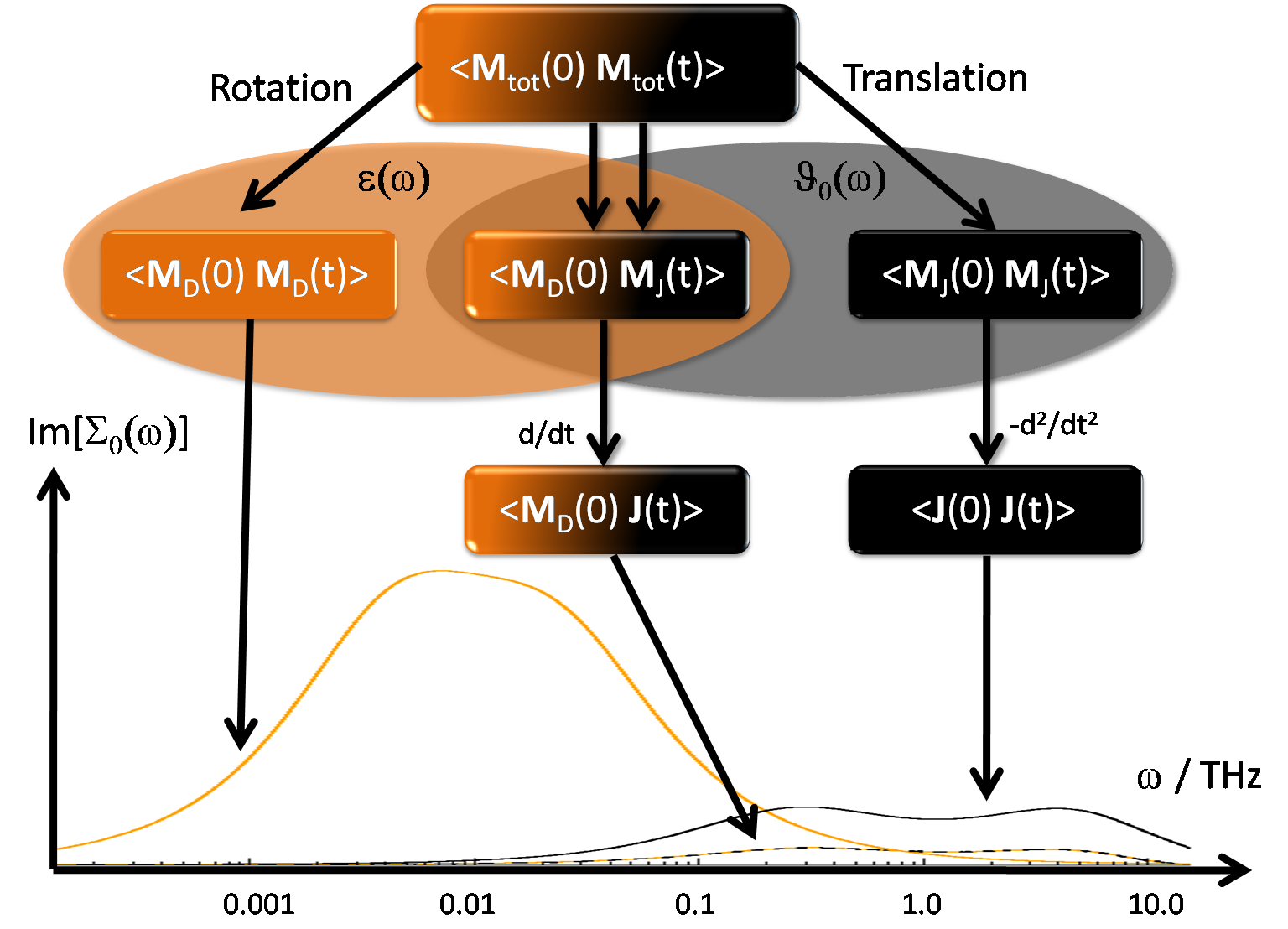Computational Spectroscopy
 Experimental spectroscopy yields complex spectra characterized by the superposition
of various aspects of molecular dynamics. Therefore, it is left to computer simulation to
evaluate individual components and thus disentangle the complex information.
In a recent book "Computational spectroscopy" (Wiley-VCH) edited by J. Grunenberg several
computational approaches are presented. We contributed a chapter
"Computational dielectric spectroscopy of charged, dipolar systems" concerning dielectric
spectroscopy to this book.
Experimental spectroscopy yields complex spectra characterized by the superposition
of various aspects of molecular dynamics. Therefore, it is left to computer simulation to
evaluate individual components and thus disentangle the complex information.
In a recent book "Computational spectroscopy" (Wiley-VCH) edited by J. Grunenberg several
computational approaches are presented. We contributed a chapter
"Computational dielectric spectroscopy of charged, dipolar systems" concerning dielectric
spectroscopy to this book.
In principle, our scientific spectrum covers the frequency range from MHz (NMR-spectroscopy)
to THz (far IR-spectroscopy) over several orders of magnitude.
 In NMR spectroscopy nuclear magnetic moments are orientated by a static
and steering magnetic field. The interaction of the reference dipole with the magnetic field
exerted by its neighbors spins is then detected by pulsed radiation field. A fundamental
question concerns the spatial range of interaction which is essential for the interpretation
of NMR spectra. For a long time this problem was more or less unresolved. Quite recently, we
could give a theoretical and computational analysis which showed that the range depends on the
frequency of the steering field.
In some sense the last two methods are quite analogous
as the both probe the field exerted by the environment on a reference probe.
In NMR spectroscopy nuclear magnetic moments are orientated by a static
and steering magnetic field. The interaction of the reference dipole with the magnetic field
exerted by its neighbors spins is then detected by pulsed radiation field. A fundamental
question concerns the spatial range of interaction which is essential for the interpretation
of NMR spectra. For a long time this problem was more or less unresolved. Quite recently, we
could give a theoretical and computational analysis which showed that the range depends on the
frequency of the steering field.
In some sense the last two methods are quite analogous
as the both probe the field exerted by the environment on a reference probe.
 Dielectric spectroscopy applies a spatially homogeneous, ω-dependent electric field.
The response of the system can be described by relaxation of collective dipole moments
⟨M(0)M(t)⟩. Decomposition can be made with respect to species (solute,
solvent), solvation shells (Voronoi decomposition) and type of motion (translation,
rotation, libration, electronic motions).
Dielectric spectroscopy applies a spatially homogeneous, ω-dependent electric field.
The response of the system can be described by relaxation of collective dipole moments
⟨M(0)M(t)⟩. Decomposition can be made with respect to species (solute,
solvent), solvation shells (Voronoi decomposition) and type of motion (translation,
rotation, libration, electronic motions).
This wide-ranging analysis does not only necessitates sophisticated methods and algorithms
for the computation of the corresponding observables, but also demands state-of-the-art simulation
techniques, e.g. polarizable simulations (Drude oscillators or point-induced dipoles) or
QM/MM simulations. As a result, our computational tools have become indispensable for the
analysis of dielectric spectra. Furthermore, we plan to expand our research to Optical Kerr
effect spectroscopy which is in particular sensitive polarizability effects.
In solvation spectroscopy a chromophore is electronically excited changing its dipole moment Δμ. The interaction energy with the electric field of the solvent is a measure of the solvent relaxation. In MD simulations, information on this relaxation can be obtained from both, equilibrium and non-equilibrium simulations. Adding polarizable forces bring the simulation results closer to experiment, in particular for the short time region. Again decomposition with respect to species, solvation shells and type of motion are possible. In principle, solvation dynamics and dielectric spectra can be more or less converted into each other using a reaction field continuum model. this analysis shows the importance of contribution of the static conductivity.
